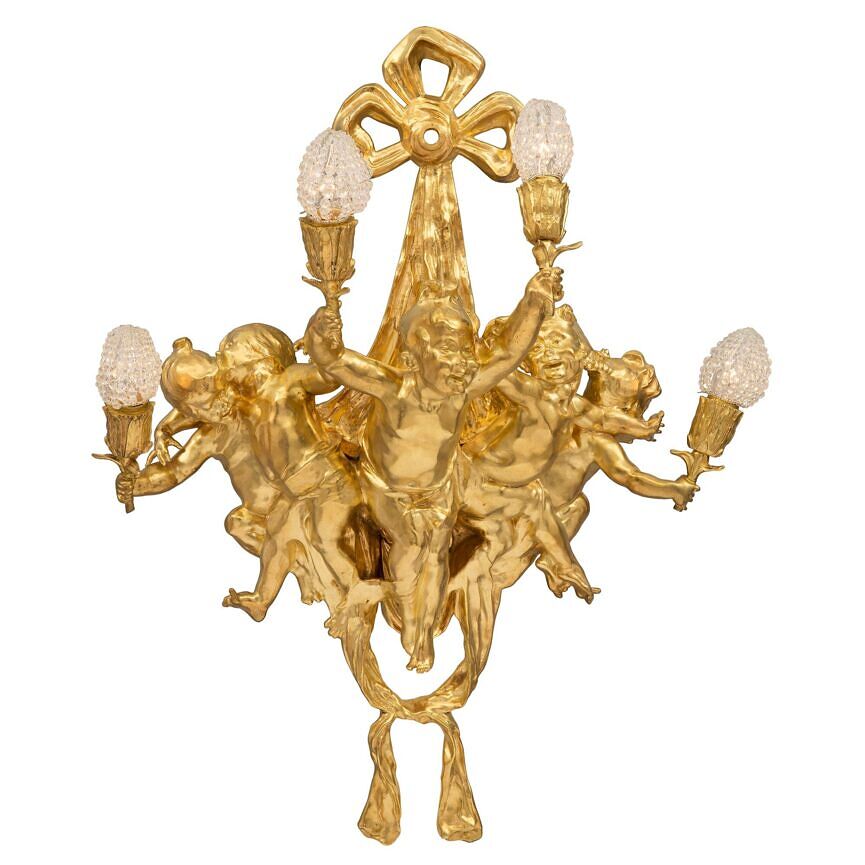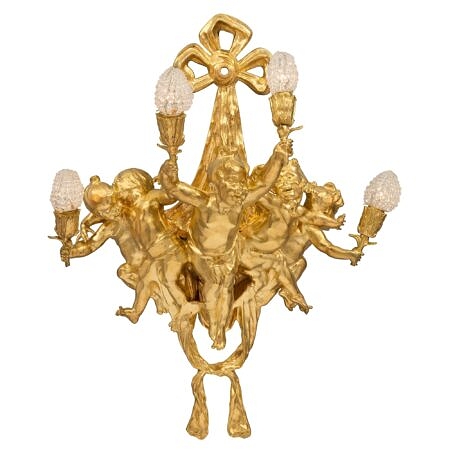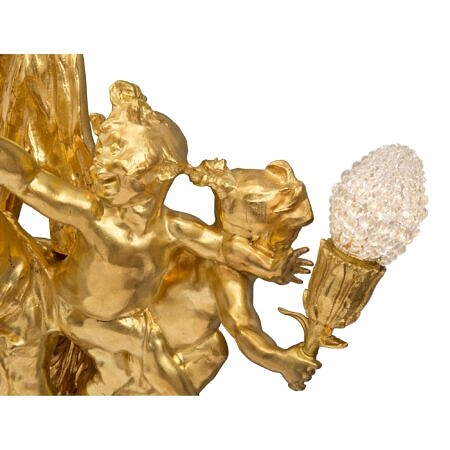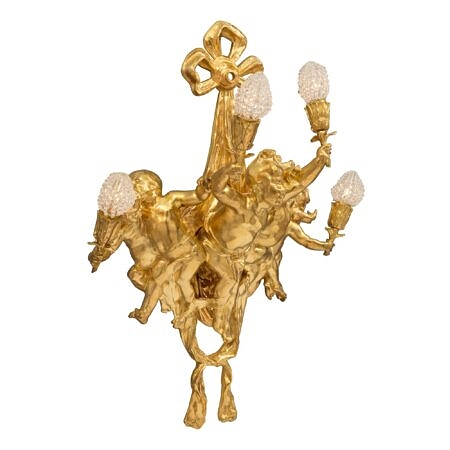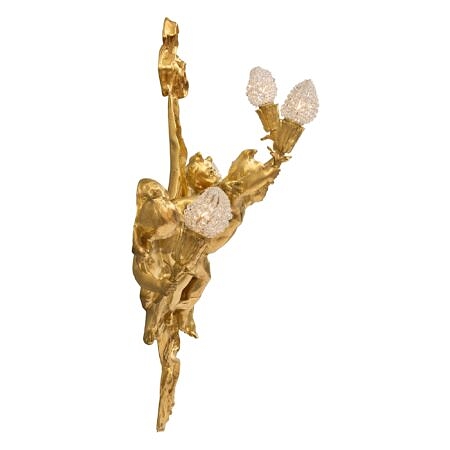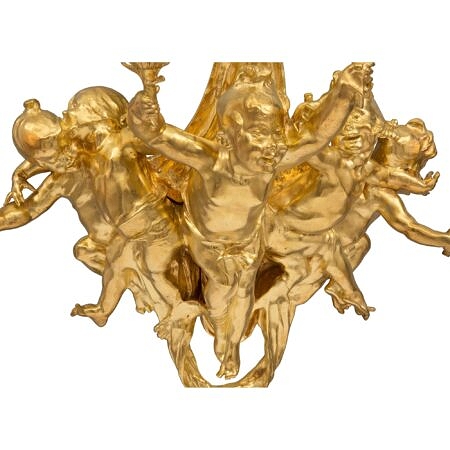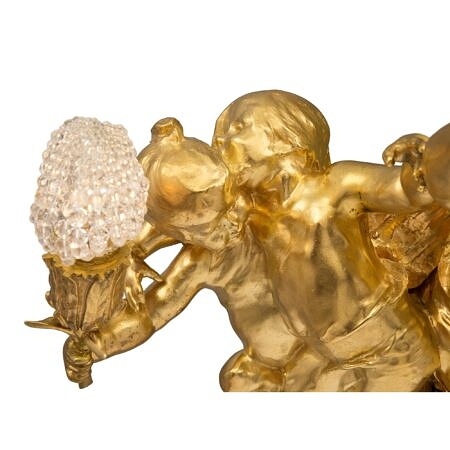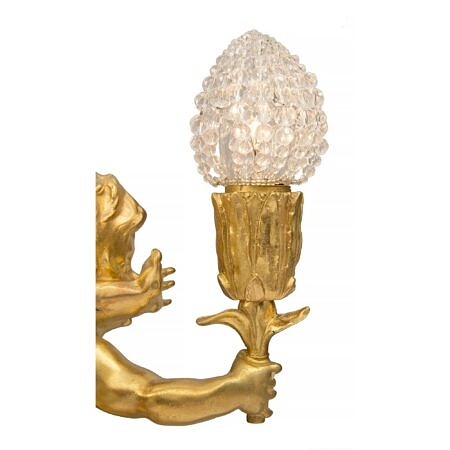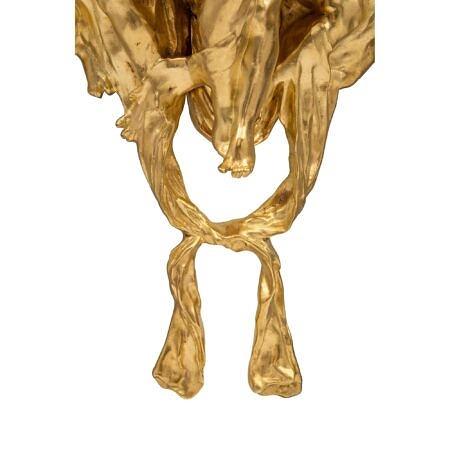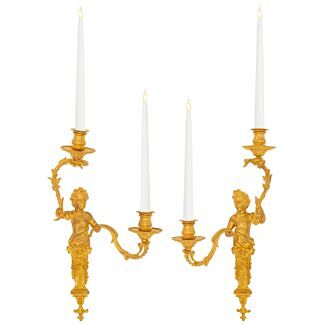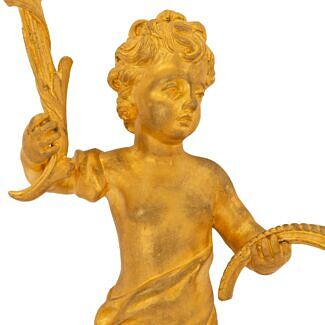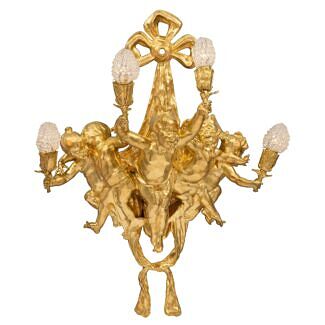A French 19th century Louis XVI st. Belle Époque Period four arm ormolu sconce
List: $9,800.00
A striking French 19th century Louis XVI st. Belle Époque Period four arm ormolu sconce. The sconce is centered by a lovely bottom tied swaging fabric. At the center are five most charming richly chased cherubs dancing and playing, while... — Read More
A striking French 19th century Louis XVI st. Belle Époque Period four arm ormolu sconce. The sconce is centered by a lovely bottom tied swaging fabric. At the center are five most charming richly chased cherubs dancing and playing, while holding up finely detailed floral candle cups decorated with elegant beaded light covers. Above the cherubs is the striking pierced top crown with a lovely tied ribbon. — Read Less
Shades shown for display purposes, sold separately.
- Item # 10506
-
H: 30.5 in L: 23 in D: 11.5 in
H: 77 cm L: 58 cm D: 29 cm
- France
- 19th Century
- Ormolu
- Belle Époque Period Read More
- Gustave Joseph Chéret Read More
Related products
-
# 4685 - H: 19" L: 10" D: 6"


